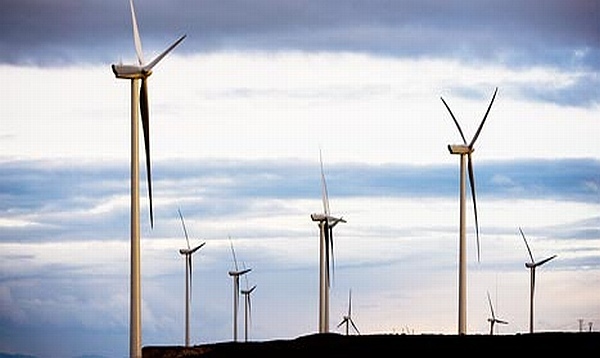Mexico City, Mexico – Mexico’s Marena Renovables; a group comprised of Macquarie Mexican Infrastructure Fund, Mitsubishi Corporation, and Dutch pension group PGGM; has placed an order for 132, V90-3.0 wind turbines for the creation of Latin America’s largest wind project to date.
The consortium is moving forward with the mega breeze plan and has reached an agreement for 396 megawatts (MW) worth of wind turbines with Vestas, the Danish company which is the largest manufacturer of these turbines in the world.
“This is a very important achievement for us, as we endeavor to strengthen our leadership position in Latin America and globally,” stated Juan Araluce, Vestas' chief sales officer. “We are committed to the development of wind energy in Mexico and are extremely proud to bring a clean, competitive, and predictable energy source there, while contributing to the creation of local high-quality jobs and compatibility.”
Vestas also will provide a full range of services to build the wind farm, including civil and electrical works; supply, installation, and commissioning of the wind turbines; a VestasOnline Business SCADA system; and a 10-year service and maintenance agreement, including its Active Output Management package.
 |
| Isthmus of Tehuantepec's wind farm can produce enough electricity to power 700,000 Mexican homes. |
The project will be located in the Isthmus of Tehuantepec, in the southeastern region of the state of Oaxaca, in southern Mexico. Three wind energy parks are already up and running there and, with 204 turbines, can produce 306 MW annually and power thousands of homes. Total production from the wind farm on the Isthmus amounts to 1.1 billion kilowatts a year, or roughly enough electricity to power 700,000 Mexican homes annually.
Mexican electric utility Cuauhtemoc Moctezuma has agreed to purchase the clean, renewable electricity generated by the wind farm. Cuauhtemoc Moctezuma is owned by Dutch brewer Heineken NV and subsidiaries of Fomento Economico Mexicano SAD de CV (FEMSA) under a 20-year power purchase agreement.
FEMSA operates the largest Coca-Cola bottler in Latin America and OXXO, a large and fast-growing chain of convenience stores. The wind-generated electricity from the Oaxaca wind farm will be used to power Coca-Cola FEMSA, OXXO, and Heineken NV’s Mexican operations.
“This power supply agreement will help us cover our energy needs in a sustainable way,” stated Alfonso Garza, FEMSA’s director of human resources and strategic procurement. “Today, wind power is a reliable, competitive, and clean source of energy, and therefore should be integrated in our energy supply cache.”
Marena Renovable’s Oaxaca wind farm will contribute substantially to Mexico’s goal of reducing carbon emissions 50% by 2050 as compared to their 2002 level.
Mexico’s Congress in 2010 enacted the National Energy Strategy. Proposed by the Energy Ministry (SENER), the policy establishes a goal of reducing the percentage of electricity Mexico generates from fossil fuels to 65% by 2024, 60% by 2030, and 50% by 2050.
Reaching the goals set for 2024 will require Mexico to generate an additional 7,000 MW of clean energy in addition to the 10,000 MW currently planned.
Worldwide, Mexico ranks 13th in terms of greenhouse emissions and slightly under the world average of greenhouse emissions per person, according to the US Energy Information Administration. With the Oaxaca wind farms in place, Mexico is expected to drop its CO2 emissions by 670 tons a year.
The advantages of providing Mexicans with clean energy are twofold for the country. Not only will the additional sources of clean energy allow Mexico to reduce CO2 emissions, it will also provide for its independence on oil exports.
Although Mexico’s largest source of income is oil exports, experts say that Mexico’s oil production potential is dropping. Last month, Mexico’s Energy Secretariat announced that oil production will likely be stagnant for the next 14 years unless the Petroleos Mexicanos (Pemex) substantially boosts investment.
But with or without the added investment, Mexico’s oil sector will almost certainly play a major part in the country’s economy for years to come.
“At the end of the day Latin American countries will be hard pressed to keep the industry’s wind energy growth up to its potential without a global price placed on carbon and other measures, to account for the real costs to society of conventional power generation,” said Steve Sawyer, the Global Wind Energy Council secretary general.
While investment in oil production has lagged in the last decade, investment in wind energy has not. In 2004, the country produced about 2 MW of electricity from wind farms. In 2011, the country produced 873 MW, and production doesn’t seem to be slowing. By the end of 2014, Mexico is expected to produce about 2,500 MW annually from wind energy.


